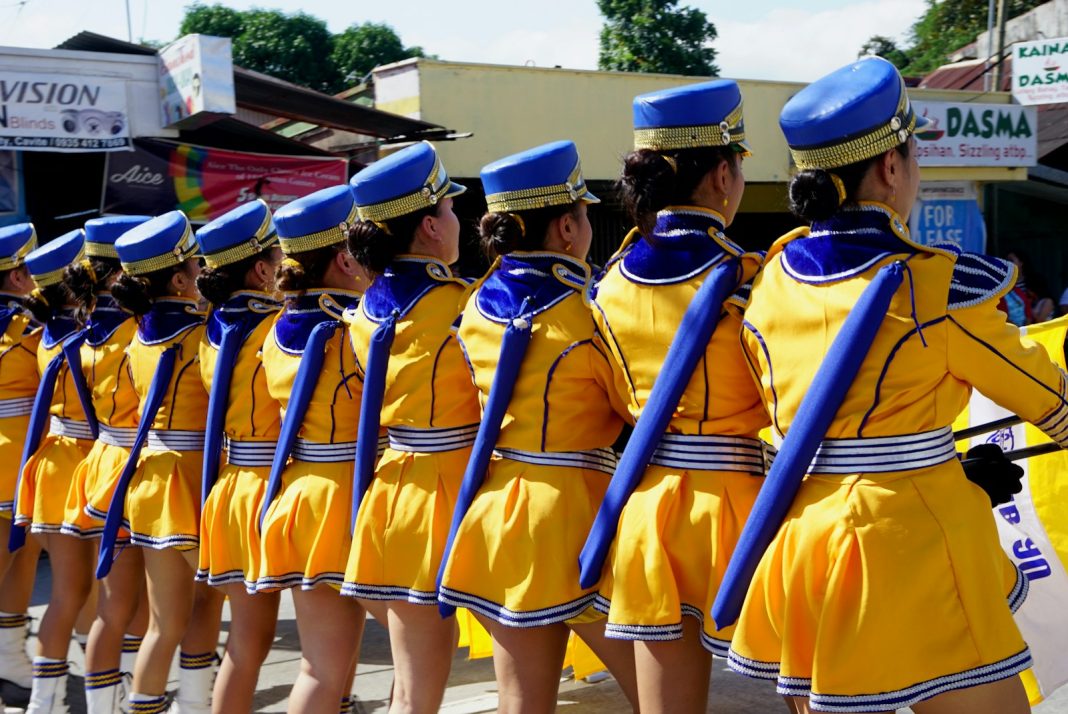In the ever-evolving world of fashion, the boundary between professional and casual attire has become increasingly blurred. One of the most significant trends that reflect this shift is the rise of chic uniforms—clothing that not only serves its purpose during office hours but can seamlessly transition to after-hours social events. The versatility of these garments has revolutionized how we approach workwear, demonstrating that function and style are no longer mutually exclusive. Gone are the days when corporate clothing was synonymous with stiff, uncomfortable, and uninspiring outfits. Today, uniforms are evolving into dynamic, fashionable choices that empower professionals to feel confident both in and outside the office. This essay explores the transformative nature of chic uniforms, focusing on their adaptability, comfort, and potential to reshape the modern workplace.
The Evolution of Professional Wear
Historically, uniforms were created with practicality in mind. They were designed to offer workers a uniform appearance, typically with little consideration for individual style or comfort. From the starched collars of the 19th century to the grey suits of the mid-20th century, the idea of “corporate attire” was synonymous with conformity. However, in recent decades, the need for both comfort and personality has reshaped how we view office wear. The cultural shift towards individuality and self-expression has extended to the workplace, where attire is seen as a form of personal branding and professional identity.
The evolution of professional wear can be seen most clearly in the rise of more versatile, stylish uniforms. Traditional office dress codes that once demanded formal attire, such as suits and ties for men and blouses and skirts for women, are increasingly being replaced by modern, functional alternatives. The lines between what is deemed “business casual” and “after-hours” have become less rigid, leading to a greater emphasis on multi-purpose clothing that can easily transition from a corporate setting to a more casual or social environment.
The Rise of the “Chic” Uniform
The term “chic” suggests an effortless elegance, something that transcends mere trends and enters the realm of timeless style. Chic uniforms combine the structured and polished nature of professional wear with contemporary, fashion-forward elements. These outfits are no longer limited to the boardroom or office cubicles; they are designed to work in multiple contexts, from client meetings to dinner dates, and from office presentations to casual meetups with friends.
One of the key features of chic uniforms is their adaptability. A well-designed uniform can be dressed up or down depending on the occasion. For instance, a tailored blazer paired with a simple blouse and trousers can be worn to the office for a polished and professional look. After work, simply swapping the trousers for a pair of sleek jeans or a skirt can create a chic, yet relaxed, after-hours outfit. Accessories such as statement jewelry, a designer handbag, or stylish heels can further elevate the look for an evening out.
In addition to being adaptable, chic uniforms often incorporate luxurious materials and innovative design elements that enhance their wearability and style. Fabrics such as silk, fine wool, and high-quality cotton are now commonly used in office wear, giving professionals the chance to feel as comfortable as they look put-together. The inclusion of stretch materials also ensures that garments retain their structure while allowing for greater movement, making them ideal for individuals who are always on the go.
The Role of Comfort in Modern Workwear
While style is important, comfort has become an essential factor in modern workwear. Professionals spend long hours at the office, attending meetings, collaborating with colleagues, and completing tasks that require concentration and focus. As such, the clothing worn should support both mental and physical well-being. Traditional uniforms or business attire often felt restrictive, leading to discomfort and frustration. Today, however, comfort is no longer sacrificed in the name of professionalism.
Chic uniforms have embraced the concept of “comfort without compromise,” where comfort is integrated into the design without sacrificing style. This includes the use of ergonomic cuts, stretch fabrics, and temperature-regulating materials that allow wearers to stay comfortable throughout the day. Whether attending an early morning meeting or working late into the evening, individuals can feel at ease in their outfits, which enhances their ability to perform at their best.
The rise of athleisure wear, which blends athletic and casual wear with office attire, is another example of the growing demand for comfort in professional clothing. Pieces like tailored joggers, performance blouses, and stretchy blazers provide the flexibility needed for those who lead busy, active lifestyles, making them ideal for a workday that stretches into evening social engagements. This trend also reflects a shift in workplace culture toward more relaxed, flexible environments, where comfort is encouraged without compromising on professionalism.
Reimagining the Workplace: Style Meets Professionalism
Chic uniforms also have the power to redefine the modern workplace by promoting a culture of inclusivity and individuality. In many industries, employees are no longer required to adhere to rigid dress codes, allowing them to express their personality through their clothing choices. This shift reflects a growing recognition that personal style can coexist with professionalism. As a result, businesses are increasingly adopting more flexible policies when it comes to work attire, offering employees the freedom to choose garments that make them feel both comfortable and confident.
A key benefit of chic uniforms is their ability to foster a sense of empowerment among workers. When employees are given the opportunity to dress in a way that reflects their personal style, it can lead to increased job satisfaction, higher productivity, and a more positive workplace atmosphere. Chic uniforms that transition easily from office to after-hours also encourage a sense of work-life balance, where professionals can seamlessly integrate their personal and professional lives without the need for a complete wardrobe change.
The fashion industry has recognized the growing demand for chic uniforms, and as a result, many designers have created collections specifically geared toward professionals who need clothing that works in a variety of contexts. Brands such as Zara, H&M, and Everlane have embraced this trend, offering collections that feature versatile pieces like blazers, skirts, dresses, and trousers that can be styled for both work and leisure. High-end designers have also introduced more casual options, blurring the lines between office wear and casual wear, demonstrating that chic uniforms can be both luxurious and functional.
The Future of Workwear: Beyond the Office
As the modern workforce continues to evolve, so too will the nature of professional attire. The boundaries between the office and after-hours attire will likely continue to blur, with more emphasis placed on versatile, stylish uniforms that offer both comfort and professionalism. The growing demand for work-life balance and the rise of flexible work arrangements mean that individuals will increasingly seek clothing that can accommodate their diverse needs, from meetings to social gatherings.
Moreover, as workplaces become more inclusive and diverse, the concept of a “uniform” may take on different meanings. For some, this may mean clothing that embraces cultural identity, gender expression, or personal preferences. For others, it may be about embracing sustainable fashion, with eco-friendly materials becoming an essential part of the uniform equation. The future of chic uniforms will likely be defined by their ability to adapt to the changing needs and values of the workforce while maintaining the core elements of versatility, comfort, and style.


